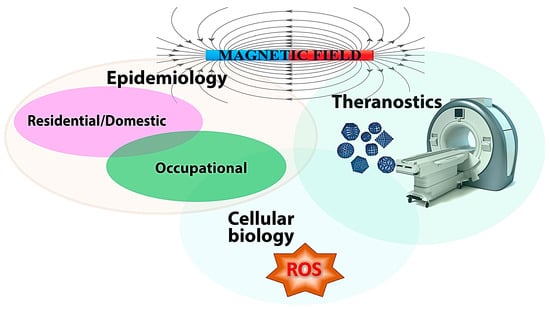Magnetic Fields and Cancer: Epidemiology, Cellular Biology, and Theranostics
Abstract
Share and Cite
Maffei, M.E. Magnetic Fields and Cancer: Epidemiology, Cellular Biology, and Theranostics. Int. J. Mol. Sci. 2022, 23, 1339. https://doi.org/10.3390/ijms23031339
Maffei ME. Magnetic Fields and Cancer: Epidemiology, Cellular Biology, and Theranostics. International Journal of Molecular Sciences. 2022; 23(3):1339. https://doi.org/10.3390/ijms23031339
Chicago/Turabian StyleMaffei, Massimo E. 2022. "Magnetic Fields and Cancer: Epidemiology, Cellular Biology, and Theranostics" International Journal of Molecular Sciences 23, no. 3: 1339. https://doi.org/10.3390/ijms23031339
APA StyleMaffei, M. E. (2022). Magnetic Fields and Cancer: Epidemiology, Cellular Biology, and Theranostics. International Journal of Molecular Sciences, 23(3), 1339. https://doi.org/10.3390/ijms23031339






